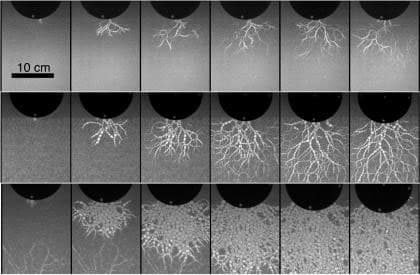Earth-Penetrating Missiles To Get Better At Destroying Underground Bunkers
A missile (or a meteor) hitting the ground can cause a lot of destruction above the ground. The harder you hit, the more the damage; but that didn't apply to the earth-penetrating missiles. Simply hitting the ground harder to destroy the underground bunker has not been a very successful technique so far. Duke University researchers decided to find out what happens under the ground during the impact. The results of the study were published in Physical Review Letters, in which, the Duke team talks about their experiments and techniques developed to study high-speed impact in artificial soil and sand.
The findings of the experiment were very interesting. It was observed that the projectiles experienced more resistance if they hit the ground with more velocity. The research team demonstrated this using a metal projectile by dropping it from seven foot high ceiling into a pit of clear plastic beads. These bids transmit light differently when compressed and the team had to deploy high-speed cameras [40K frames/second] with polarising filters to study the impact. Take a look at the following photo captured by the camera:

Photos courtesy of Abram Clark.
The researchers found out that as the metal projectile struck the bed of pits, several force-chains got formed - similar to that of lightening bolt. The higher the speed of impact, the force-chains grew extensively causing the impact energy to get carried away from the point of strike quickly.
The study may help defence systems to build missiles that can penetrate the bunkers. The study was funded by the Defence Threat Reduction Agency. Read about the study on the source link below.
Source: What Happens When a Missile or Meteor Hits | Duke Today
The findings of the experiment were very interesting. It was observed that the projectiles experienced more resistance if they hit the ground with more velocity. The research team demonstrated this using a metal projectile by dropping it from seven foot high ceiling into a pit of clear plastic beads. These bids transmit light differently when compressed and the team had to deploy high-speed cameras [40K frames/second] with polarising filters to study the impact. Take a look at the following photo captured by the camera:

Photos courtesy of Abram Clark.
The researchers found out that as the metal projectile struck the bed of pits, several force-chains got formed - similar to that of lightening bolt. The higher the speed of impact, the force-chains grew extensively causing the impact energy to get carried away from the point of strike quickly.
The study may help defence systems to build missiles that can penetrate the bunkers. The study was funded by the Defence Threat Reduction Agency. Read about the study on the source link below.
Source: What Happens When a Missile or Meteor Hits | Duke Today
Replies
-
 Rajni JainWith due respect to all the researchers, I am not sure if the experiment will holds good at all soil type or earth strata.
Rajni JainWith due respect to all the researchers, I am not sure if the experiment will holds good at all soil type or earth strata.
It's vibration that is making a sever impact below the surface, softer the upper soil, lesser would be the impact of this. This is only me, can someone expert in Geo flash some light on this?
You are reading an archived discussion.
Related Posts
A group of researchers have created invisible objects inside a microwave range. Wearing an invisibility cloak is every fantasy-lovers dream. When the blockbuster movie 'Harry Potter' hit the screens, the...
With its R&D center based out of Chennai cooking up a new recipe for its devices, iBerry India is back with a new smartphone called 'iBerry Auxus Beast' all set...
Photolithography, also known as optical lithography or UV lithography, is an optical process that is used for transferring micropatterns on to a substrate. This is done by revealing particular areas...
Since speaking at WordCamp Mumbai 2015, I have been introduced to Slack. WordPress dev co-ordination and discussion happens on Slack (and anyone is free to join). What's more awesome is...
Hi there!
My name is Ruth Evans, I am Public Manager at our research brain center.
Currently we are looking for high-motivated, dedicated engineers to assist us in doing researches...
